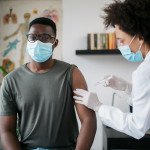In a large cohort of people taking pre-exposure prophylaxis (PrEP) in San Francisco, the rate at which they contracted HIV was nearly eight times higher during the period after some stopped taking PrEP compared with the rate seen while the population was on Truvada (tenofovir disoproxil fumarate/emtricitabine) for HIV prevention.
Multiple recent analyses of PrEP users across the United States have found that people who start taking Truvada to prevent HIV often do not continue on the drug for long, often with less than half still on PrEP one year after receiving their first prescription.
Matthew Spinelli, MD, of the University of California, San Francisco (UCSF), presented findings from an analysis of a large cohort of PrEP users in San Francisco at the 10th International AIDS Society Conference on HIV Science (IAS 2019) in Mexico City .
Spinelli and his colleagues included in their analysis 986 people who started PrEP between July 2012 and November 2018 through the San Francisco Primary Care Clinics (SFPCC), a 15-clinic integrated primary care delivery system for those with public insurance or who lack health care coverage. Two thirds were men who have sex with men (MSM), and 12% were trans women. Just over a third (37%) were white, 25% were Latino, 13% were Black, 8% were Asian and 18% identified as mixed or other.
The times when the cohort members started and stopped Truvada for HIV prevention were recorded by PrEP navigators in the SFPCC system. If such times were not available, the investigators reviewed medical charts. They identified new cases of HIV through the Centers for Disease Control and Prevention’s Enhanced HIV/AIDS Reporting System.
All the cohort members who tested positive for HIV were interviewed by two medical anthropologists and an infectious disease physician. The interviews were recorded and transcribed.
Eight people contracted the virus in the cohort; seven of these did so after discontinuing PrEP, and one did so while attempting to use the on-demand, or 2-1-1, dosing protocol but doing so incorrectly (that particular seroconversion was counted as occurring while on PrEP).
The correct protocol for the 2-1-1 PrEP strategy is to take two tablets of Truvada two to 24 hours before expected sex and then if sex occurs, another dose 24 hours after that first double dose, and a final dose 48 hours after the first double dose. Research has indicated that this protocol is highly effectiveat preventing HIV.
Five of those who tested positive for HIV during the San Francisco study were MSM, and three were transgender women. Two were Black, two were Latino, one was Native American and three were white.
Four of the seven people who contracted the virus after stopping PrEP did not discuss discontinuing Truvada with their medical provider.
All told, the study’s analysis included 953 cumulative years of follow-up while cohort members were receiving PrEP and 895 cumulative years of post-PrEP follow-up.
The analysis indicated that for each 100 cumulative years of follow-up there were 0.1 new HIV infections while cohort members were receiving PrEP and 0.8 new cases during the post-PrEP period. This meant that quitting PrEP was associated with an estimated 7.5-fold increase in the risk of HIV compared with staying on Truvada for prevention.
Various themes emerged among interviews with the eight people who seroconverted after stopping PrEP.
Seven individuals expressed difficulty with accessing PrEP due to housing, substance use or mental health challenges. One said: “I lost my housing, and so in the midst of all that, there’s just no going to doctor appointments.”
Six people said they had difficulty prioritizing PrEP given the effort or cost required to maintain a prescription, with one person saying: “Maybe if they did tell me I should apply for Medi-Cal [California’s version of Medicaid] or something…that probably would’ve been easier. Because as soon as I saw my $300 co-pay, well, that’s not going to happen, so I’m done.”
PrEP is widely covered by insurance, including Medicaid, and Gilead Sciences, which manufactures Truvada, provides a co-pay card that will cover up to $7,200 in annual out-of-pocket expenses, including co-pays and deductibles, with no monthly limit. Some people seeking PrEP have reported that their insurance companies have pushed back against these cards, leaving them with unaffordable out-of-pocket expenses nevertheless.
In a recent Congressional hearing about the high list price for Truvada, Gilead CEO Daniel O’Day testified that 98% of those who use the co-pay card for PrEP pay nothing out of pocket to obtain the prescription.
That said, the co-pay card does not cover the cost of the quarterly medical visits and lab tests require to maintain a PrEP prescription. While such visits are likely covered by insurance, individuals seeking PrEP may still be required to pay a co-pay, one that that some may find prohibitively expensive.
Five of those who tested positive in the San Francisco study said they had difficulty assessing the benefit of PrEP and their personal risk for HIV.
Finally, three individuals said they stopped PrEP because of issues related to trust and intimacy with their primary sexual partner. “I’m betraying a trust if I feel I need to protect myself,” one person said. “For me, from now on, I won’t trust anybody with sex.”
Past research has indicated that MSM tend to forgo condoms with an ongoing sexual partner as a means of expressing trust in that person. Introducing an HIV prevention method to the interpersonal dynamic, thus, is perceived as a sign of distrust.
The study authors concluded that a low-cost generic version of Truvada as well as a simplification of the process for obtaining insurance coverage could help people get on PrEP and stay on it, thus preventing HIV transmissions.
Gilead recently announced that Teva Pharmaceuticals will produce the first generic version of Truvada starting at the end of September 2020. This will likely bring down the current monthly list price for Truvada of $1,600 to $2,000, but by only a modest amount. However, after multiple generic competitors are permitted to enter the market starting at the end of March 2021, the price of Truvada-based PrEP should ultimately fall dramatically.
Additionally, the U.S. Preventive Services Task Force recently gave PrEP an A rating, meaning that by January 2021, all private insurance companies will be required to cover PrEP, and with no cost sharing. (This recommendation does not apply to cost sharing for labs and clinic visits.) That said, should the Trump administration succeed in dismantling the Affordable Care Act, this could undo the task force’s recommendation, as the implications of its guidance are governed by the ACA.
The San Francisco study’s authors also concluded that health care providers should call to check in on those who miss PrEP-related follow-up appointments, perhaps through an automated service.
The investigators also stressed that health care providers and health systems should support the ongoing use of PrEP among those who remain at risk of contracting HIV.
To read the study abstract, click here.







1 Comment
1 Comment